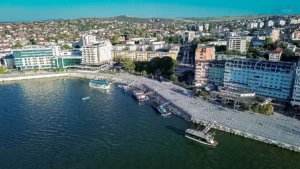
Cuckoo

Description and how to observe Cuckoo:
The Cuckoo is one of the most distinctive birds of the Danube Delta, known for its unmistakable song. It is a medium-sized bird, about 32-34 cm long with a wingspan of 55-60 cm. Its plumage is generally grey and its tail is long and slightly rounded with white spots. Males have a grey colouring on the upper body and a finely striped abdomen, while females may have brownish shades. The cuckoo is easiest to spot in the spring months, when males sing to mark their territory. It can usually be seen in the forests of the Danube Delta and on thickly vegetated banks, but it is a discreet bird, usually flying quickly and remaining hidden among the branches.
What it feeds on Cuckoo:
The Cuckoo is an insectivorous bird, feeding mainly on large insects such as caterpillars, which other birds avoid because of toxic substances or irritant pearls. The cuckoo has a digestive system adapted to eat these insects, including spiny caterpillars, which are an important food source. They also eat various species of beetles, grasshoppers and other insects.
Threats:
In the Danube Delta, the cuckoo faces several threats, including habitat loss, pesticide use and climate change, which affect migration and food sources. Human activities that lead to degradation of the delta's natural habitats can negatively affect cuckoo populations and other migratory bird species.
Ecological role:
More information about Cuculus canorus:
The cuckoo is a protected species in many European regions, including Romania, and is considered an indicator of the health of natural habitats. Cuckoo sightings and their parasitic behaviour are studied by ornithologists to better understand the complex species relationships and evolutionary adaptations of birds.
Discover now the most beautiful places in the Danube Delta!
In the following pages, you will find detailed information about:
- Top tourist destinations: Traditional villages, nature reserves, tourist trails and much more.
- Activities and attractions: Everything you need to know about boating, fishing, bird watching, cycling and other activities.
- Accommodation and catering: Accommodation to suit all budgets and restaurants serving traditional cuisine.




